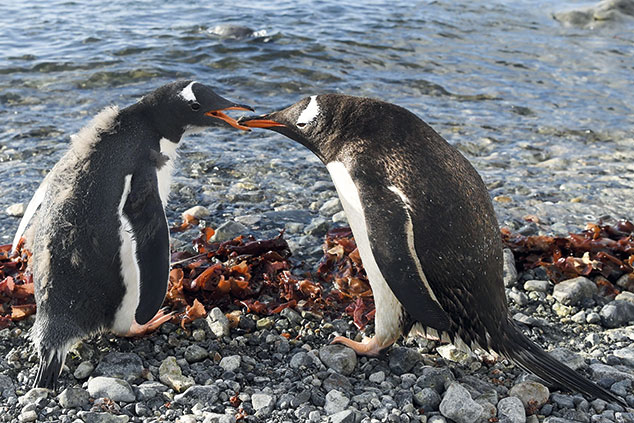
For almost 60 years, the southern polar regions have been protected by international treaty. But the continent’s commercial potential is putting co-operation under threat. Simon Wilson reports.
Who does Antarctica belong to?
No one – or everyone, depending on how you look at it. Northern hemisphere nations have been making territorial claims on the southern polar landmass since the early 19th century. But in a triumph of 1950s diplomacy, all seven nations then making territorial claims, some of them overlapping – Argentina, Australia, Chile, France, New Zealand, Norway and the UK – agreed to put them on hold in the furtherance of arms control and scientific endeavour. Those seven, and five other nations involved in scientific research in the polar region – the US, Russia, South Africa, Japan and Belgium – all signed the Antarctic Treaty.
This took effect in 1961 and has since been added to with various related agreements. All the interested nations agreed to suspend all territorial claims, ban all military activity in the region, preserve it for peaceful scientific research, inspect each others’ research activities on request, and resolve all disputes by consensus. From the original 12, parties to the treaty now number 53.
Has the system worked?
Yes. For almost 60 years, the harsh climate and inaccessibility of the region has meant that a spirit of co-operation has prevailed, even in the face of conflicts in other parts of the world. Take the example of King George Island, about 75 miles off the coast of Antarctica.
The island is part of what Britain calls the South Shetland Islands (discovered in 1819), and is now formally part of the British Antarctic Territory, a 660,000 square mile segment of Antarctica first claimed by Britain in 1908. But the UK’s territorial claim overlaps with rival claims by Argentina (which calls the island Isla 25 de Mayo) and Chile (which annoys Argentina by going with a Spanish version of the Brits’ name, Isla Rey Jorge). But since 1961, all such territorial claims have been frozen, meaning any country can set up a research facility anywhere in Antarctica.
And have they?
Yes indeed. On King George Island alone (a popular spot due to its relative accessibility), all three claimants have built research stations – as have Brazil, China, the Czech Republic, Ecuador, South Korea, Peru, Poland, Russia, Uruguay, and the United States. China’s new “Great Wall” base (its fifth in Antarctica as a whole) can sleep 150 and boasts a full-size basketball court. For 60 years, then, a kind of constructive ambiguity regarding sovereignty has allowed science to flourish in the frozen south. Many suspect, however, that this successful status quo is showing signs of fraying.
Why is that?
A combination of factors, including the long-run shift in the geopolitical order to a more multi-polar world, the changing climate, tensions over growing tourism and commercial fishing, more knowledge of the region’s potential resources, and technological innovation that may make it possible to exploit them in the future.
“The Antarctic Treaty has never resolved the issue of either sovereignty or access to mineral resources,” Ann-Marie Brady, an expert in polar politics, told The Independent last year. “There is a lack of political trust among many Antarctic states, as well as a deep conflict of values and interests. Now that the technological barriers to Antarctic exploration have eased, more and more states are seeking access to Antarctica, putting pressure on the governance structures.”
Where is agreement breaking down?
Commercial fishing is already breeding disagreements between interested nations over issues of marine wildlife protection. The nutrient-rich seas are being exploited for both fish and krill (an edible crustacean) by Russia, China and South Korea.
Many fear that industrial-scale fishing of krill in the region has the potential to damage the ecosystem – the crustacean is a key source of food for penguins, whales and seals. And earlier this year, a Greenpeace report warned that large-scale fishing for krill is being conducted “in the immediate vicinity of penguin colonies and whale feeding grounds”, and documented incidents of fishing boats being involved in groundings, oil spills and accidents.
So how is this being resolved?
It isn’t. All interested nations periodically discuss measures to protect the region’s ecosystem. But last year, for the sixth year running, they failed to agree on plans for a marine protected area off East Antarctica (a vast area rich in cold-water corals and penguin foraging grounds), and instead agreed only to protect a small part of the Ross Sea. Countries such as China and Russia take the view that the Antarctic is not a special case and that its resources should exploited like any other region.
What other resources are involved?
Antarctica’s mineral, oil and gas wealth is the long-term prize. The treaty banning mining its reserves of iron ore, coal and chromium is expected to come up for review by 2048 – but could well be challenged before then. Geologists also estimate that Antarctica holds at least 36bn barrels of oil and natural gas – some estimates put the figure at 200bn barrels – and future technology may make it economically viable to extract this.
Are there other disputes?
The distinction between scientific research and military activities is one: parts of Antarctica are ideal for intercepting signals from satellites, establishing covert surveillance networks and remote control of weapons. Australia has said that it sees China’s new base, which includes domes to protect satellite stations, as a strategic threat. All of these factors mean the region is facing multiple challenges that are hard to address by polite consensus under the existing system.
The treaty system needs “a new kind of vision”, Klaus Dodds, an expert on Antarctic governance, tells the Financial Times. “One where parties are explicit about what they are trying to do.”